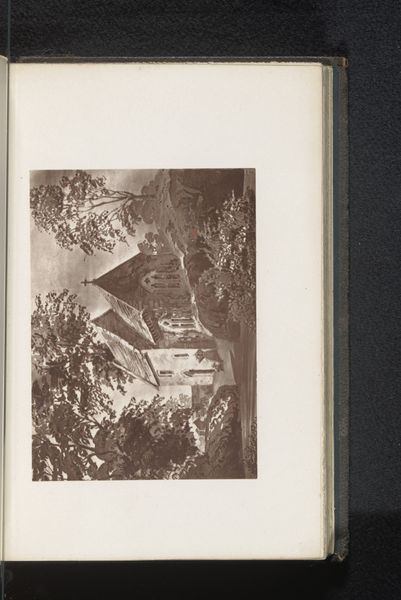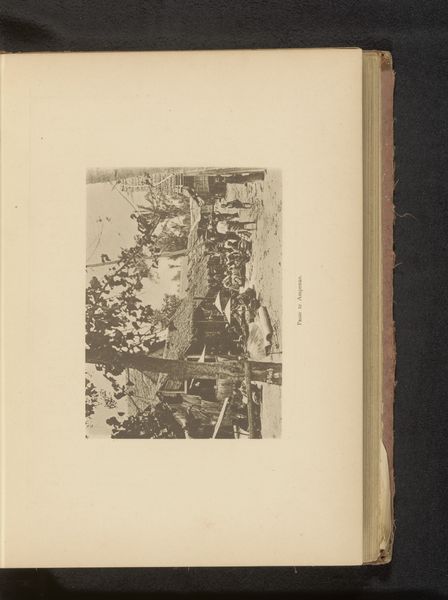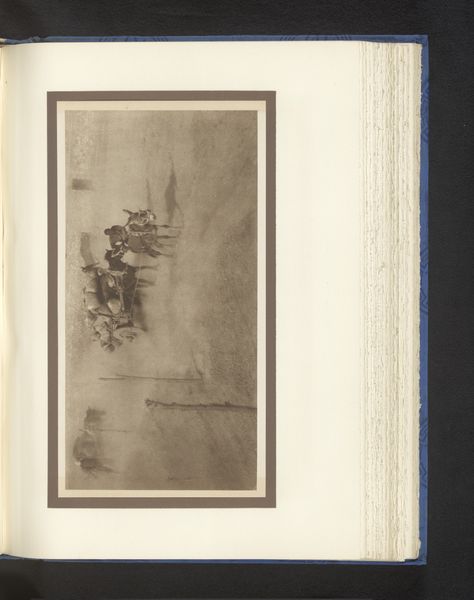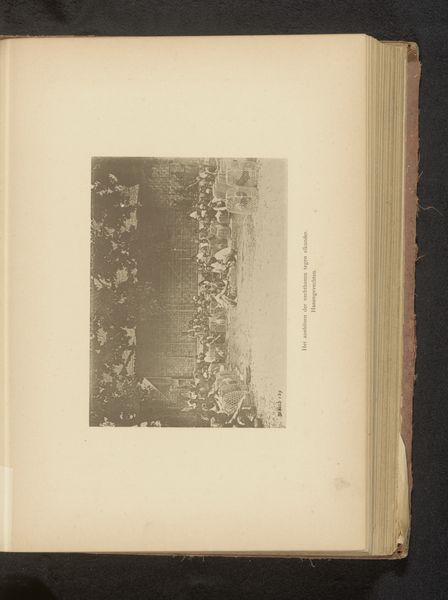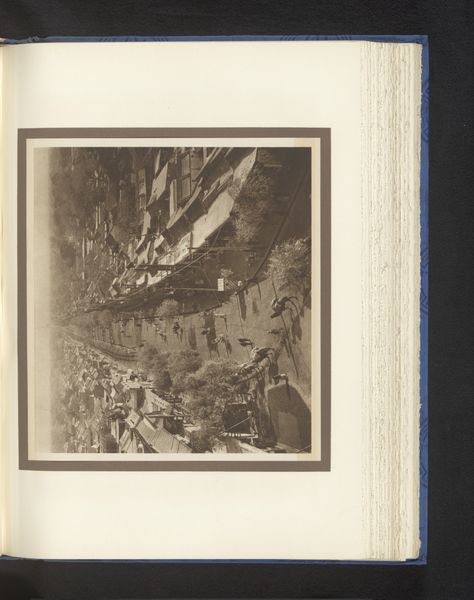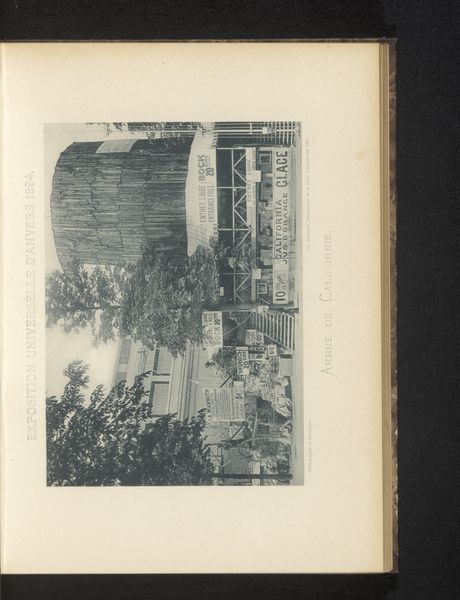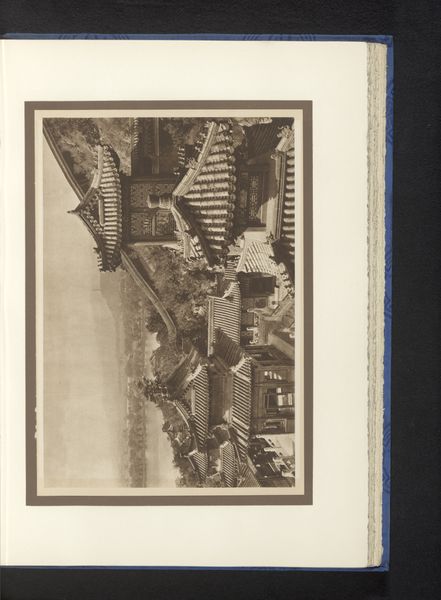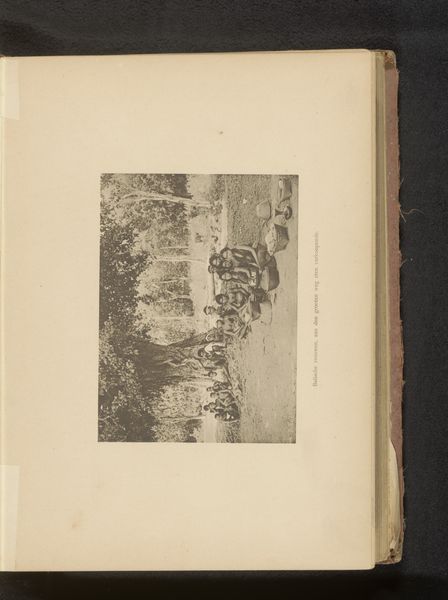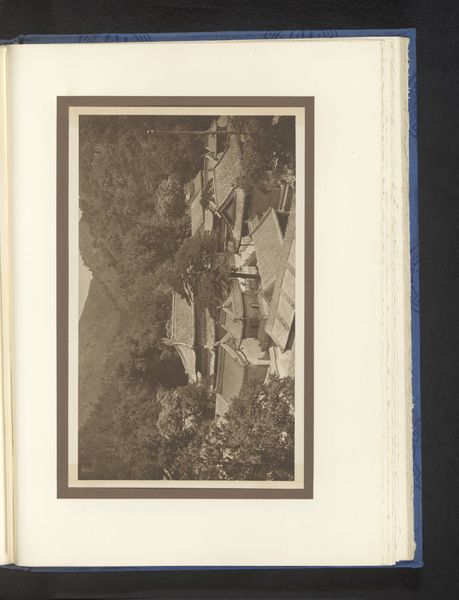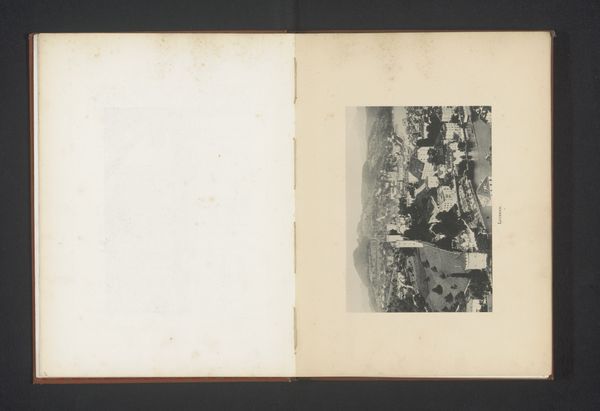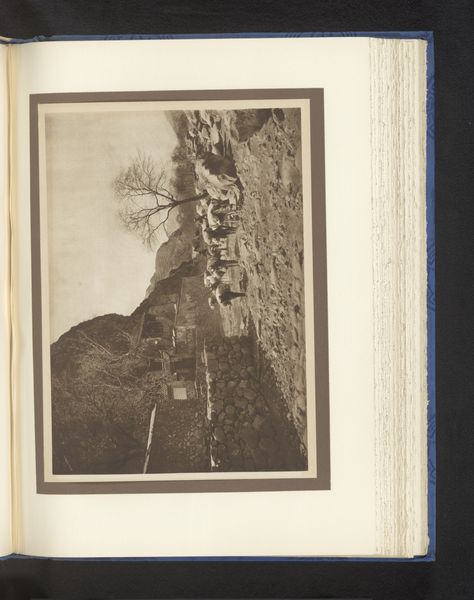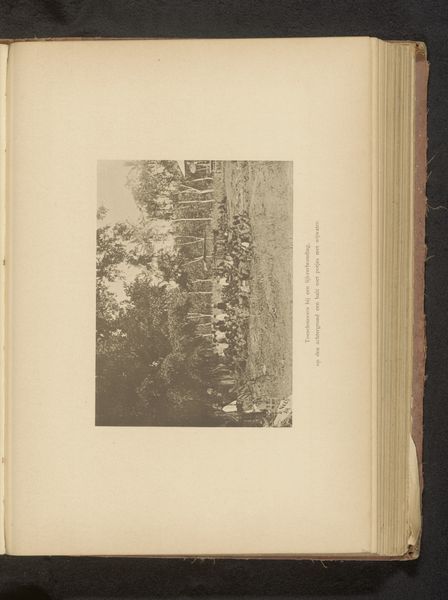
#
aged paper
#
homemade paper
#
paper non-digital material
#
ink paper printed
#
paperlike
#
sketch book
#
paper texture
#
folded paper
#
thick font
#
paper medium
Dimensions: height 182 mm, width 276 mm
Copyright: Rijks Museum: Open Domain
Curator: Up next, we have “Gezicht op de Verboden Stad te Peking,” which translates to “View of the Forbidden City in Peking," dating to before 1920 and attributed to Donald Mennie. Editor: My first impression is the image evokes a kind of ethereal serenity, achieved by subtle tonal variations, predominantly greys and creams. There is also an impressive textural contrast. Curator: Indeed. Donald Mennie, a Scottish businessman based in China, captured this image using, rather remarkably, a portable darkroom, indicating the lengths to which photography was becoming both popularized and specialized at the turn of the century. We can appreciate the labor of both access and execution. Editor: I'm drawn to how the receding geometric forms interplay with the organic masses of trees. It presents a dynamic tension between constructed order and natural profusion. Also, I can see in it a distinct pre-modern compositional approach. Curator: Mennie operated during a turbulent time. As photography democratized representation, European powers expanded their influence in China, viewing sites like the Forbidden City with curiosity but often also with colonial ambition. These photographic documents offered both record and instrument. Editor: That´s a pertinent historical inflection! Now consider this visual reading; this work eschews rigid symmetry and focal points. The perspective gives the sense of peeking through something like leaves into a new way of seeing. The whole composition seems almost provisional and fragmentary. Curator: Precisely, the way the work appears within this bound compilation and within the aesthetic of aged paper, amplifies that sentiment and speaks of precious though still vulnerable heritage. Editor: Overall, the image offers a chance to consider not just photographic aesthetics, but the historical and social milieu which they reflect and by which they are constructed. Curator: Ultimately, considering this photographic print, with its muted elegance and historical significance, has opened to me a richer appreciation for the complexities inherent in cross-cultural representation at this period.
Comments
No comments
Be the first to comment and join the conversation on the ultimate creative platform.
